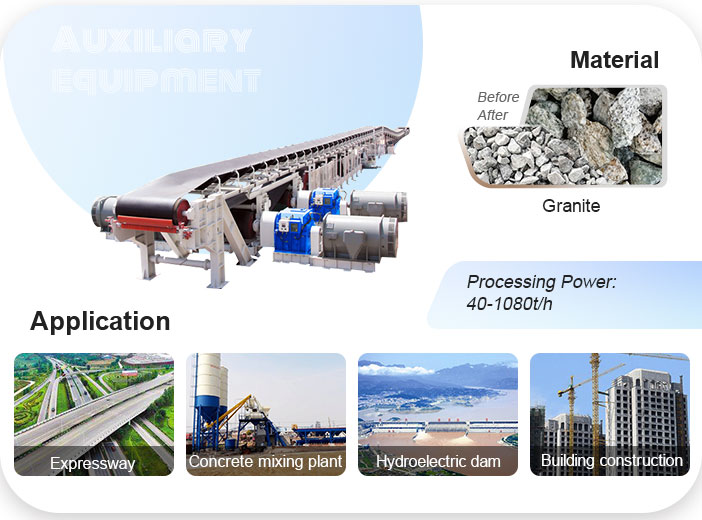
We look forward to being your best partner or E-mail us at
sales@china-cfc.ccThe belt conveyor is commonly used in transporting the loose materials and packed stuff in the industries as mining, metallurgy, coal, etc. It has advantages of large transport capacity, simple structure, convenient maintenance, standardized components, etc. According to the actual working condition, it can take one set of belt conveyor, a group of belt conveyors, or to build a horizontal or sloping transport system with other transport equipment. The suitable environment temperature is from -20℃ to +40℃. The temperature of materials is below 50℃.

The belt conveyor takes the belt as the traction and loading component. The materials are continuously transported under the action of belt moving. The belt moves round the transmission rollers and tensioning rollers to form an infinite endless circular belt. The support rollers support the upper and lower belt to limit the deflection sag of belt, and the tensioning device provides the belt with specific tension strength. When the belt conveyor is operating, the driving device is driving the transmission rollers. The force of friction between the belt and transmission rollers makes the belt and the materials on the belt moving together.
| Belt width(mm) | Belt length (mm) | Transport speed(m/s) | Capacity(tph) | ||
|---|---|---|---|---|---|
| Power (kw) | |||||
| B400 | ≤12 | 12-20 | 20-25 | 1.3-1.6 | 40-80 |
| 1.5 | 2.2-4 | 4-7.5 | |||
| B500 | ≤12 | 2.2-4.0 | 20-30 | 1.3-1.6 | 40-80 |
| 3 | 4-5.5 | 5.5-7.5 | |||
| B650 | ≤12 | 12-20.0 | 20-30 | 1.6-1.6 | 130-320 |
| 4 | 5.5 | 7.5-11 | |||
| B800 | ≤6 | 43266 | 15-30 | 1.3-1.6 | 280-540 |
| 4 | 5.5 | 7.5-15 | |||
| B1000 | ≤10 | 10-20.0 | 20-40 | 1.3-2.0 | 430-850 |
| 5.5 | 7.5-11 | 11-22.0 | |||
| B1200 | ≤10 | 10-20.0 | 20-40 | 1.3-2.0 | 655-1280 |
| 7.5 | 11 | 15-30 | |||
| B1400 | ≤10 | 10-20.0 | 20-40 | 1.3-2.4 | 1300-1450 |
| 11 | 11-22.0 | 22-45 | |||
| B1600 | ≤10 | 10-20.0 | 20-40 | 1.3-2.4 | 1500-1800 |
| 15 | 22-30 | 30-75 | |||
Note: The capacity may vary with different materials and feeding sizes.